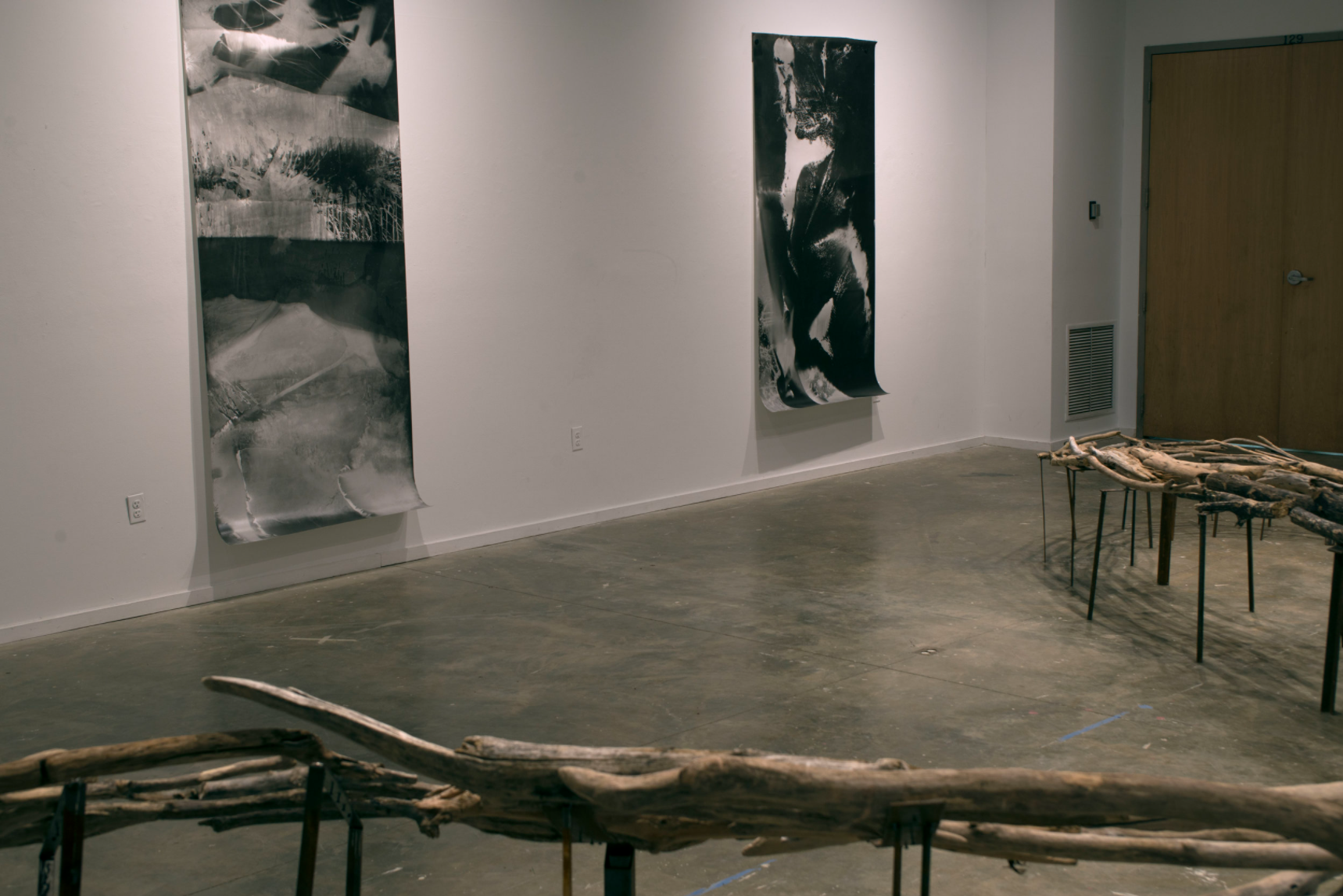I Have Never Stepped in the Same River Twice
2017 - 2018A senior thesis by Madison Emond
“No man ever steps in the same river twice, for it’s not the same river and he’s not the same man.” – Heraclitus









I never knew that I would learn to walk the Saw Kill River in moonlight, that I would come to know its contours and the depths of its waters so well. I never expected that the tree roots and rocks that lay in my path to its banks would know my gait so fully.
This project began as a reaction to the hurricanes that struck the Caribbean in the Fall of 2017. It felt apt to question landscape imagery and how it affects the viewer’s relationship to the environment. Still images of nature can estrange us from knowing the Earth as a living, shifting, unruly being, locked in a process of steady, often violent, transformation. No matter how moving or dramatic a photograph of nature is, it often speaks to the vantage point of its maker standing outside of it.
Rather than making images of the landscape I wanted to make images with the landscape. This is a simple notion: giving the Earth itself agency, an
opportunity to display its vitality through the photographic process. But this is ultimately a practice of establishing and maintaining a relationship based upon presence and attentive listening. This is the kind of attention that I believe the planet requires from us in this moment.
The work shown in this exhibition is made through the interaction of photosensitive materials, the natural world, and moonlight. No camera is involved in the creation of these images. Large pieces of black-and-white paper and full strips of film are immersed in the river, wrapping around surrounding plants and decaying trees, exposing in moonlight, and developed on site.
Rather than making images of the landscape I wanted to make images with the landscape. This is a simple notion: giving the Earth itself agency, an
opportunity to display its vitality through the photographic process. But this is ultimately a practice of establishing and maintaining a relationship based upon presence and attentive listening. This is the kind of attention that I believe the planet requires from us in this moment.
The work shown in this exhibition is made through the interaction of photosensitive materials, the natural world, and moonlight. No camera is involved in the creation of these images. Large pieces of black-and-white paper and full strips of film are immersed in the river, wrapping around surrounding plants and decaying trees, exposing in moonlight, and developed on site.












